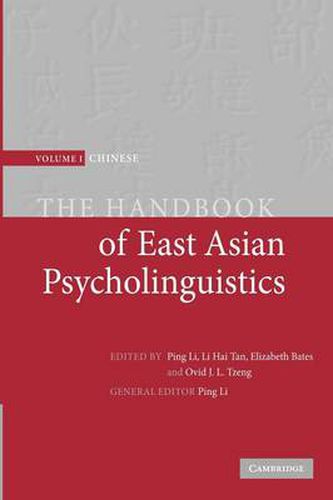Readings Newsletter
Become a Readings Member to make your shopping experience even easier.
Sign in or sign up for free!
You’re not far away from qualifying for FREE standard shipping within Australia
You’ve qualified for FREE standard shipping within Australia
The cart is loading…






A large body of knowledge has accumulated on the cognitive processes and brain mechanisms underlying language. Much of this knowledge has come from studies of Indo-European languages, in particular English. Chinese, spoken by one-fifth of the world’s population, differs significantly from most Indo-European languages in its grammar, its lexicon, and its written and spoken forms - features which have profound implications for the learning, representation and processing of language. This handbook, first published in 2006 as the first in a three-volume set on East Asian psycholinguistics, presents a discussion of the psycholinguistic study of Chinese. With contributions by over fifty leading scholars, it covers topics in first- and second-language acquisition, language processing and reading, language disorders in children and adults, and the relationships between language, brain, culture, and cognition. It will be invaluable to all scholars and students interested in the Chinese language, as well as cognitive psychologists, linguists, and neuroscientists.
$9.00 standard shipping within Australia
FREE standard shipping within Australia for orders over $100.00
Express & International shipping calculated at checkout
A large body of knowledge has accumulated on the cognitive processes and brain mechanisms underlying language. Much of this knowledge has come from studies of Indo-European languages, in particular English. Chinese, spoken by one-fifth of the world’s population, differs significantly from most Indo-European languages in its grammar, its lexicon, and its written and spoken forms - features which have profound implications for the learning, representation and processing of language. This handbook, first published in 2006 as the first in a three-volume set on East Asian psycholinguistics, presents a discussion of the psycholinguistic study of Chinese. With contributions by over fifty leading scholars, it covers topics in first- and second-language acquisition, language processing and reading, language disorders in children and adults, and the relationships between language, brain, culture, and cognition. It will be invaluable to all scholars and students interested in the Chinese language, as well as cognitive psychologists, linguists, and neuroscientists.